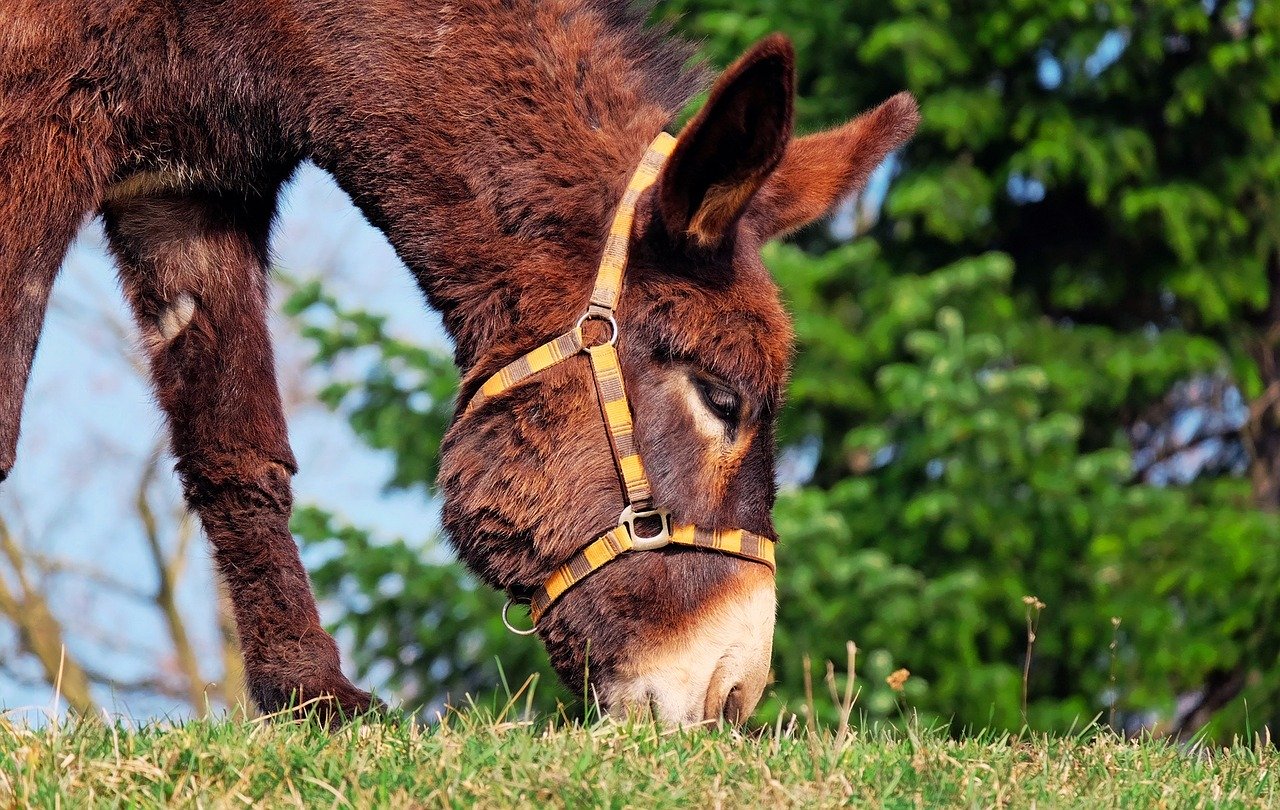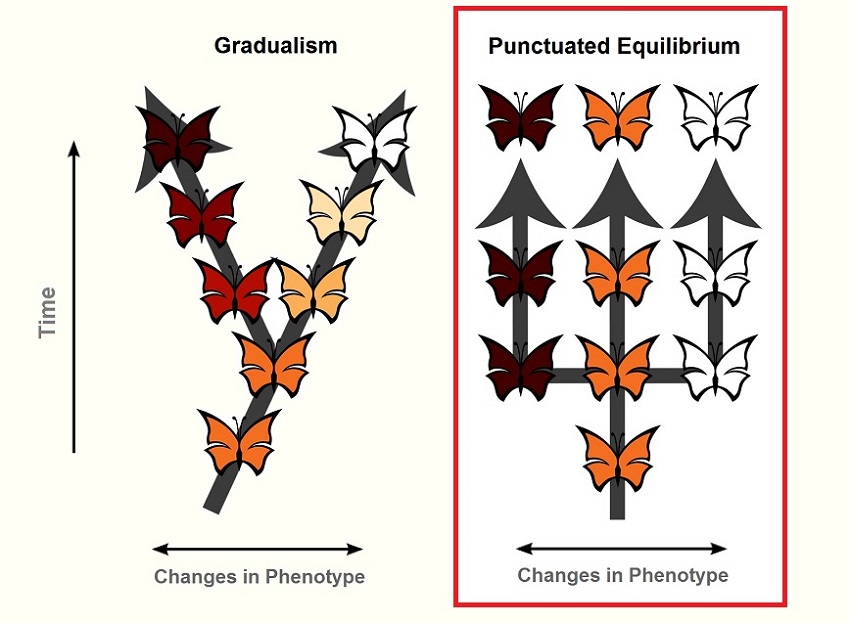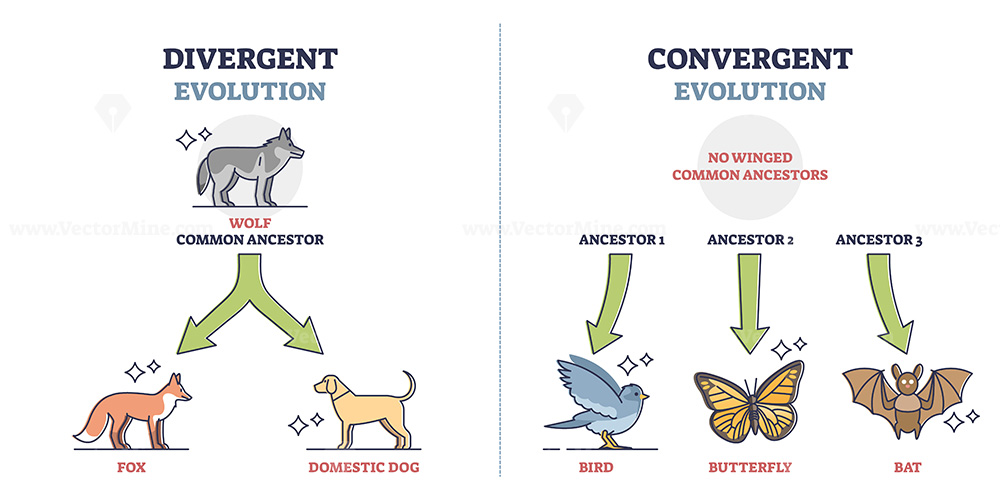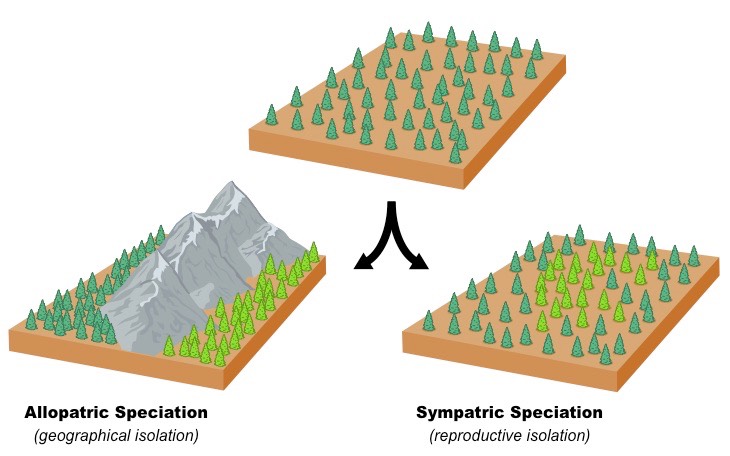Jed Quiaoit
Samantha Himegarner
AP Biology 🧬
358 resourcesSee Units
Sexual Reproduction
Speciation is the process by which new species evolve from existing ones. There are several mechanisms by which speciation can occur, but one of the most common is through the process of reproductive isolation. This occurs when two populations of a species become physically or biologically separated from each other, such that they can no longer interbreed and exchange genetic information. Over time, these isolated populations may evolve in different ways, leading to the development of new species. 😁
The biological species concept, which defines a species as a group of organisms capable of interbreeding and producing viable, fertile offspring, is one of the most widely accepted definitions of species. This concept is based on the idea that species are reproductively isolated from one another, and that this isolation is the primary mechanism by which new species evolve.
To sum the last two paragraphs in two sentences: species are defined by their ability to sexually reproduce with one another. In order for sexual reproduction to be considered “valid,” they need to be able to interbreed by exchanging genetic information for a viable, fertile offspring.
Different Species?
For example, a donkey and a horse can breed and create a mule, but that mule cannot breed with another mule to continue its own lineage, which is why donkeys and horses are considered to be separate species. (Additionally, they have different numbers of chromosomes as well). When two animals can no longer breed with one another, they are classified as different species. 🐎

Image courtesy of Pixabay.
Rates of Evolution
The rate of evolution and speciation may also differ under different ecological conditions. For instance, punctuated equilibrium and gradualism are two different, well-known models that describe the pace of evolution. 🦋
Punctuated equilibrium is a theory proposed by Niles Eldredge and Stephen Jay Gould in the 1970s. It suggests that evolution occurs in fits and starts, with long periods of stasis (little or no change) punctuated by brief periods of rapid evolution. This theory suggests that evolution is not a slow, steady process, but instead occurs in bursts, with most species remaining relatively unchanged for most of their history.
On the other hand, gradualism is a model that proposes that evolution is a slow, steady process that occurs over hundreds of thousands or millions of years. This model suggests that evolution is a gradual accumulation of small changes over time, leading to the gradual development of new species.

Source: Biology Dictionary
What if We Isolate Different Populations?
Divergent evolution is a type of evolution that occurs when different populations of a species adapt to different habitats, leading to the development of new forms. This can happen when a population becomes geographically isolated and is exposed to different selective pressures. As a result, the isolated population may evolve different characteristics that allow them to better survive and reproduce in their new habitat. 🐺
Speciation rates can be especially rapid during times of adaptive radiation, which is when a lineage diversifies into many new forms as it adapts to different habitats and ecological niches. This can happen when new habitats become available, such as when a volcano creates a new island, or when a mass extinction event opens up new ecological niches. During these times, the rate of speciation can be much higher than during times of stasis, as new forms evolve to fill the available niches.

Source: VectorMine
Types of Speciation
Allopatric Speciation
Speciation occurs when two populations become “reproductively isolated” from one another. For example, this could happen if there is a geographical barrier separating individuals of the species. If they cannot continue to breed with each other, it is possible that the two separate populations will evolve separately until they are unable to breed with each other. This is called allopatric speciation.
Sympatric Speciation
Another way that speciation could happen is through sympatric speciation. This is when individuals within the same geographic area are influenced by either disruptive selection or mating preferences. Disruptive selection occurs when two opposing traits are equally favored by nature. As the population begins to evolve oppositely, speciation is likely to occur.

Source: BioNinja
Prezygotic vs. Postzygotic Isolation
These instances can be categorized as either prezygotic or postzygotic isolation. Prezygotic isolation prevents the fertilization of eggs when two individuals breed, thus making it impossible to reproduce. This would be present in examples such as habitat isolation, or any other outside forces preventing mating or fertilization. Postzygotic isolation does not allow the formation of a fertile offspring, like in the mule example). 🥚
Practice Problem
In a hypothetical scenario, a population of birds living on a remote island becomes separated from the mainland population by a newly formed oceanic trench. Over time, the isolated island population evolves distinct physical and behavioral characteristics that allow them to better survive on the island. Meanwhile, the mainland population continues to evolve in response to different selective pressures. 🐦
Using specific examples from the scenario, identify the type of speciation that has occurred in the island bird population and explain the mechanism behind it. Then, explain the type of barrier (prezygotic or postzygotic) that is preventing interbreeding between the island and mainland bird populations.
In your answer, be sure to include specific examples of the physical and behavioral differences between the island and mainland bird populations, and explain how these differences would affect their ability to interbreed. Also, be sure to discuss the role of genetic drift, mutation, and natural selection in the speciation process, and how the formation of the oceanic trench may have influenced these factors.
Your answer should be detailed, clear, and well-supported by evidence from the scenario, as well as from current scientific understanding of speciation and reproductive isolation.
Answer
The type of speciation that has occurred in this scenario is likely allopatric speciation. This is because the island population of birds has become physically separated from the mainland population by the formation of the oceanic trench, which is the barrier that prevents interbreeding between the two populations. As a result of this isolation, the island population has been exposed to different selective pressures than the mainland population.
Over time, these differences have led to the development of distinct physical and behavioral characteristics that allows the island birds to survive better in their specific environment, while the mainland population continues to evolve in response to different selective pressures.
The barrier preventing interbreeding between the island and mainland bird populations is a prezygotic barrier. This is because the physical and behavioral differences that have evolved in the island population would prevent successful mating and fertilization from occurring between the two populations even if they were to come into contact. For example, the island birds may have developed larger beaks to crack open harder seeds found on the island, while the mainland birds may have evolved a different diet and smaller beaks.
The differences in their beak size and shape would make it physically impossible for the birds to mate and produce viable offspring. Additionally, the island birds may have developed a different courtship ritual or mating call that the mainland birds would not respond to, further preventing successful breeding between the two populations.
In conclusion, the island bird population has undergone allopatric speciation as a result of physical isolation caused by the formation of oceanic trench, which has led to the development of physical and behavioral characteristics that are specific to the island environment. The barrier preventing interbreeding between the island and mainland bird populations is prezygotic, as the physical and behavioral differences would prevent successful mating and fertilization from occurring between the two populations.
Browse Study Guides By Unit
🧪Unit 1 – Chemistry of Life
🧬Unit 2 – Cell Structure & Function
🔋Unit 3 – Cellular Energetics
🦠Unit 4 – Cell Communication & Cell Cycle
👪Unit 5 – Heredity
👻Unit 6 – Gene Expression & Regulation
🦍Unit 7 – Natural Selection
🌲Unit 8 – Ecology
📚Study Tools
🧐Exam Skills

Fiveable
Resources
© 2025 Fiveable Inc. All rights reserved.